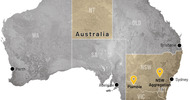by Pál Nyíri
"Extraterritoriality.", EspacesTemps.net, Mensuelles, 23.11.2009
http://espacestemps.net/document7952.html This is a publication of Prof. Dr. Pál Nyíri’s inaugural oration at Amsterdam’s Free University, delivered on November 19, 2009. Excerpt: ... In what follows I will argue that China has now taken on a leading role in promoting modernization through zones of exception, not only in China but also outside it. Although this model seems to fit with the neoliberal approach to the global economy, the Chinese state in fact plays a major economic and political role in the establishment and operation of these zones – the government initiating some of them, state banks providing credit, state construction companies building facilities, state resources companies exploiting them – just as Western powers did in the operation of concessions. In fact, recipient governments increasingly see this model of development as an alternative to the World Bank’s free-market orthodoxy.How has this come about? The lesson in modernization that concessions offered was not forgotten by China’s Communist leaders. China’s post-1978 development crucially relied on the Special Economic Zones (Sezs), a form of “internal concession” within which foreign investors as well as their Chinese employees, in exchange for helping to develop the nation, were given greater economic and social freedom than elsewhere. While these freedoms were significant for people’s everyday lives and the running of business, they were of course relative: the zones’ administration was firmly integrated into the national party and state bureaucracies, and state enterprises flocking to them were some of their main beneficiaries. Like the treaty ports, the first fourteen special economic zones were set up around coastal cities (and in some cases, like Queshi Island, off the coast of Swatow, new free trade zones were in fact identical to the old treaty ports; on this island, the old foreign consulates were reused as government offices of the Ftz). These zones have subsequently lost significance, but the current Special Administrative Regions of Hong Kong and Macau operate on a similar principle: they are spaces of interaction between Chinese and foreign capital in which the rules are relaxed and to which Chinese citizens’ access is limited.
One can discern a remarkably similar silhouette of extraterritoriality emerging around Chinese concessions in various places in Africa, Southeast Asia, South America and the Pacific as China becomes an increasingly significant overseas investor and development aid donor. To begin with, across the border from China, three of the four “Special Regions” in Northern Burma (Kokang, Mong La, and the Shan State No. 2 Special Region) are run by ethnic Chinese elites that regularly appeal to China’s government for support (Icg, 2009). When Kokang was occupied by Burmese government troops earlier this year, the 30’000 refugees who fled across the border to China were described in Chinese reports as ethnic Chinese. These populations go back to earlier waves of migration from China (including those of Kuomintang soldiers and Red Guards), but they fit neatly into the tequ logic: today, they benefit from renewed inflows of migration and investment and use Chinese currency and the Chinese language, and are connected to China’s telephone network and power grid, in more than one sense (Haitang Shequ, n.d.; 51nb.com, 2009). Farther afield, a 42-km² Chinese-run Special Economic Zone officially opened in Zambia in 2007 (Alden et al., 2008, p. 15), and four further zones in Africa are planned. Zte, a Chinese telecommunications company, has received a 100’000-hectare oil palm concession in Congo-Kinshasa (Bräutigam and Tang, 2009, p. 697). In 2008, a group of Chinese investors in Uganda reportedly signed a ninety-nine-year lease for the development of a 518-km² Lake Victoria East Africa Free Trade Zone with its own legislative structures and plans to attract 500’000 Chinese settlers (World Chinese Federation, 2008). Plans for the zone, one of the largest in the world, are said to include an airport, a free port serving five East African countries, roads, a power plant, a water purification plant, mining, an agriculture demonstration zone, a fishery, a golf club, a sports village, a university, headquarters of a new China-Africa Volunteer Corps, and residential real estate consisting of 200’000 bungalow-style buildings. According to some reports, by 2007, there were twenty-right so-called “Baoding Villages” in seventeen African countries, with a total population of 7000 Chinese farmers engaging in agriculture on rented land and united into a transnational council that sets unified rules for the villages. In addition, Chinese mining, logging, oil, and energy projects across continents also operate as concessions (in the case of power plants, often under a bot system). These have more limited populations and a narrower range of Chinese-local interactions, but they too are there for the long term and in some instances seem to assume extraterritorial privileges, such as the use of extralegal force against individuals who disrupt their operations....













